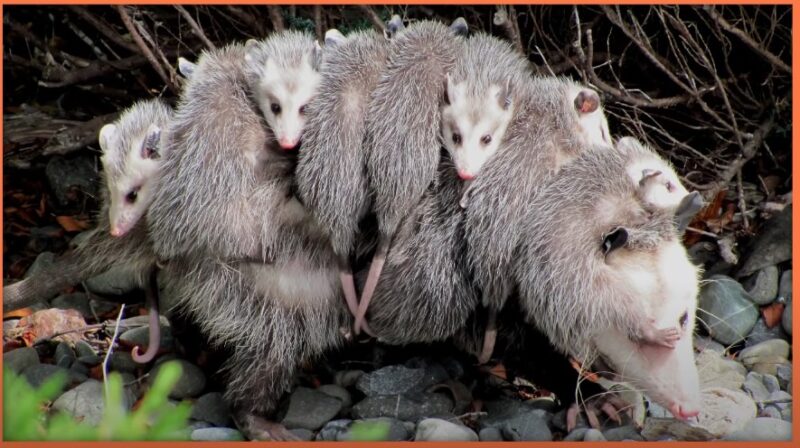Often spotted in the dead of night, rummaging through garbage cans or casually trotting along roadways, the opossum is like the quirky neighbor we all have in the animal kingdom. They’re the oddballs who know how to “play possum” and leave us scratching our heads.
But let’s address the burning question: Are these nocturnal creatures dangerous to humans? Picture this: You catch a glimpse of an opossum, and your mind starts racing. Are they plotting against you? Should you run for cover?
Take a deep breath! We’re here to clear the air and shed light on these misunderstood critters. From their bizarre behavior to their unique role in the ecosystem, we’ll debunk myths faster than an opossum can play dead!
Do these animals represent a threat?
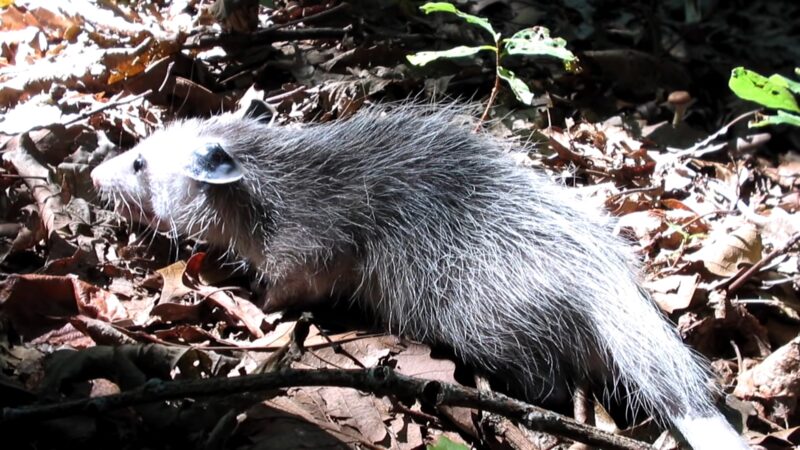
In general, opossums aren’t a threat for humans, but it’s crucial to understand their behavior and act accordingly. With this article, I aim to help you achieve the perfect harmony with these animals.
Typical Behavior
Opossums are often mistakenly viewed as aggressive due to their rather daunting display of bared teeth and hissing when threatened. However, they’re primarily passive animals, using “playing possum” or feigning death as their primary defensive mechanism.
Understanding this basic behavior can alleviate much of the anxiety surrounding human-opossum interactions and help promote peaceful cohabitation. These animals, being North America’s only marsupial, occupy a unique niche in our ecosystem.
They are opportunistic omnivores, feeding on a variety of items from fruit and insects to small rodents and carrion. This diet means they can adapt to a wide range of environments, from forests and farmland to suburban backyards.
This adaptability has allowed populations to thrive even in the face of habitat destruction. It’s important to remember that their presence in our yards and neighborhoods is often a consequence of human encroachment into their natural habitats. Recognizing this can lead to a more compassionate approach when dealing with perceived opossum ‘invasions.’
Disease Transmission
One of the foremost concerns when dealing with any wildlife is the risk of disease transmission. Opossums can carry various diseases that could potentially be transmitted to humans, including leptospirosis, tularemia, and coccidiosis.
However, it’s important to note that the risk of transmission is quite low, especially if you’re not handling these animals directly.
Leptospirosis
Leptospirosis is a bacterial infection that opossums can contract and spread through their urine or feces. Humans can become infected if they come into direct contact with these excretions or indirectly through contaminated soil or water.
Symptoms of leptospirosis in humans can vary from mild flu-like discomfort to severe complications affecting multiple organs, potentially leading to fatal outcomes. However, it is important to note that cases of leptospirosis transmission from opossums to humans are relatively rare.
Tularemia
This disease can be transmitted through bites or scratches from an infected opossum. In rare cases, tularemia can also be transmitted through inhalation of aerosols containing the bacteria. Tularemia in humans can cause symptoms such as fever, skin ulcers, swollen lymph nodes, and in some cases, pneumonia.
It is crucial to understand that while tularemia is a potential threat, instances of transmission from opossums to humans are uncommon.
Coccidiosis
Coccidia, the parasite that causes the disease, can be present in their feces and may pose a risk if accidentally ingested by humans. However, cases of coccidiosis transmission from opossums to humans are infrequent, and the disease is typically more common in animals such as dogs and cats.
To minimize the risk of disease transmission from opossums, it is advisable to avoid direct contact with these animals and their excretions. If you come across opossum droppings or suspect contamination, it is important to wear gloves and take precautions when cleaning the area.
Regular hand hygiene, including thorough handwashing with soap and water, can help reduce the risk of infection.
Rabies
Rabies is a viral disease that affects the central nervous system, leading to a range of neurological symptoms and often resulting in death. When discussing the dangers of wildlife, this disease is often a primary concern. However, despite common misconceptions, the risk of rabies transmission from opossums to humans is incredibly low.
The body temperature of opossums is lower than most other mammals, which makes it difficult for the rabies virus to survive and multiply. In fact, according to the Centers for Disease Control and Prevention (CDC), these animals are eight times less likely to carry rabies compared to wild dogs.
Furthermore, cases of rabies in opossums are extremely rare in the historical data. While this doesn’t completely rule out the possibility of an opossum carrying rabies, it does significantly lower the risk compared to other wildlife like raccoons, skunks, or bats.
Despite this low risk, it’s still crucial to avoid direct contact with them, especially those displaying abnormal behavior.
Human Interactions
The adaptable nature of these omnivores often leads to their paths crossing with humans. These encounters usually occur when an opossum is scavenging for food, often in trash cans or pet food left outdoors. While these situations can be startling, it’s important to remember that these animals are usually more afraid of you than you are of them.
When confronted by a human, they often react in one of two ways. They’ll either attempt to scare off the perceived threat through a show of bared teeth and hissing, or they’ll resort to their classic ‘possum’ act, where they mimic the appearance and smell of a dead animal.
Neither of these responses is an aggressive attack, but rather, defense mechanisms to avoid confrontation. In the vast majority of cases, leaving them alone will lead to its departure once it feels safe to move. It’s always best to give these animals the space and time they need to retreat.
Aggressive pursuit or attempts to remove them manually can result in unnecessary stress for the animal and potential injury for the person.
Do they cause damage?
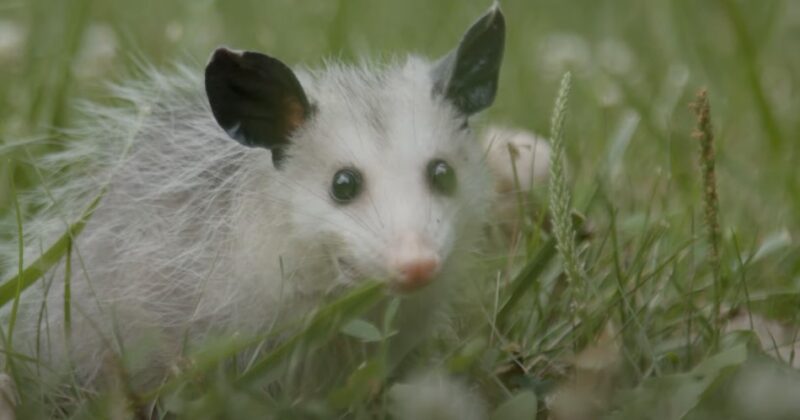
Despite the relatively low risk they pose to human health, they can be a nuisance for homeowners. Their scavenging nature can lead to overturned garbage cans, scattered trash, or raided gardens. Additionally, they can cause damage to property if they decide to take up residence in attics, crawlspaces, or under decks.
In their quest for food, these animals have been known to make their way into chicken coops, leading to conflict with homeowners raising poultry. They are also known to occasionally disrupt pet food or water sources left outside, leading to confrontations with household pets.
Despite these nuisance factors, it’s crucial to remember that opossums are often simply trying to survive in a world that is increasingly encroaching upon their natural habitats. With a little understanding and some simple preventative measures, conflicts can be significantly reduced, allowing for peaceful cohabitation.
Opossum-human encounters
When it comes to handling encounters with opossums, the best advice is to leave them alone. These animals are generally non-aggressive and will move on their own accord if given time and space. If they play ‘dead,’ it’s not an invitation to move or touch the animal.
It’s best to keep a safe distance and allow them to recover and move along naturally. In the case of a persistent opossum or one causing significant nuisance, the first step is to remove any potential attractants. This can include securing trash cans, removing pet food from outside, and cleaning up any fallen fruit or vegetables from your garden.
If possible, close off any access to potential den sites such as under your deck or in your attic. If the opossum continues to be a problem after taking these preventative measures, it may be necessary to seek professional help.
Wildlife control services can safely and humanely trap and relocate the opossum without causing harm to the animal or risk to the homeowner.
How to mitigate these Conflicts?
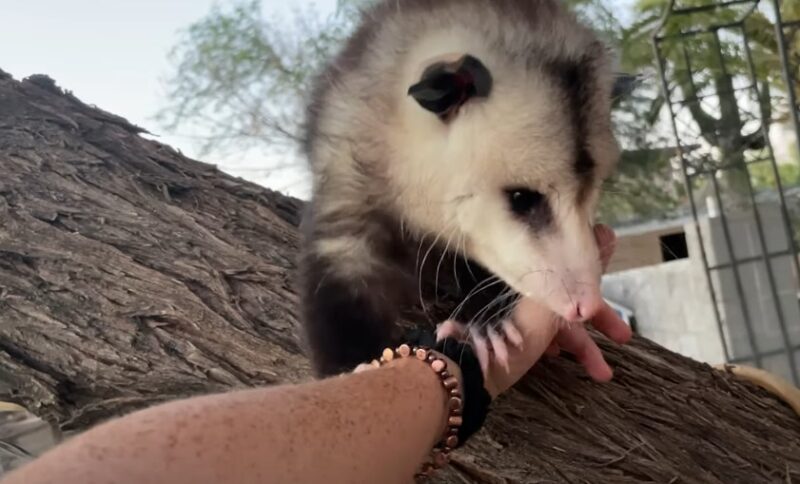
Mitigating conflicts between humans and these animals primarily involves preventative measures. As mentioned earlier, securing garbage cans, removing outside pet food, and eliminating potential den sites can go a long way in reducing opossum attractions.
It’s also recommended to install motion-activated lights in your yard, as opossums are nocturnal and typically avoid well-lit areas. If you have fruit trees or vegetable gardens, regular cleanup of fallen produce can prevent them from being attracted to your yard.
Remember, these omnivores are part of the natural ecosystem and play a crucial role in controlling pests and maintaining balance. Taking the time to understand these creatures and implementing thoughtful preventative measures can help ensure peaceful coexistence.
Pet Safety
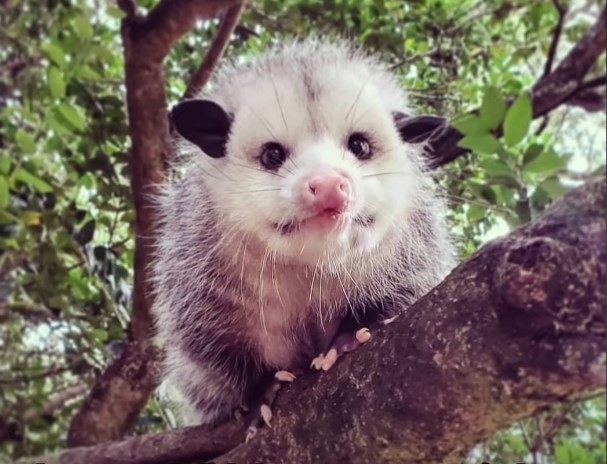
Just as opossums can potentially pose a risk to humans, there are concerns when it comes to interactions between them and pets. Although rare, conflicts can occur, particularly if a pet perceives the opossum as a threat or if the opossum is cornered and feels it must defend itself.
The diseases they can carry, such as leptospirosis, can also pose a risk to pets, particularly dogs. Dogs can contract leptospirosis through contact with the urine of an infected opossum, leading to severe kidney damage or even death if left untreated.
To mitigate these risks, pet owners should avoid leaving pet food outside, which can attract opossums. Regularly vaccinating pets and using flea and tick preventatives can also help reduce the risk of disease transmission.
If your pet does have an encounter with an opossum, it’s crucial to contact your veterinarian for advice, even if the pet appears unharmed.
Beneficial Creatures
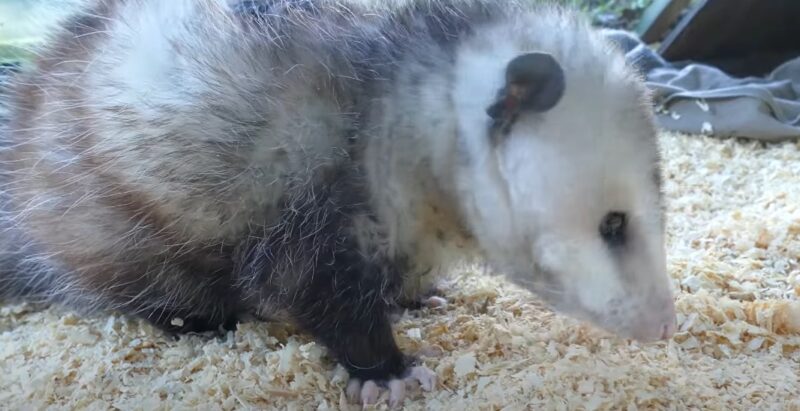
While much of this article has focused on the potential dangers and nuisances associated with opossums, it’s important to highlight the positive aspects of these creatures. They play a beneficial role in the environment as scavengers, feeding on dead animals and insects, thereby helping to keep our neighborhoods clean.
One significant benefit is their role in pest control. An opossum can eat up to 5,000 ticks in a single season, helping to control populations of these disease-carrying pests. They also feed on other bothersome pests such as cockroaches, rats, and mice.
In addition, they have a robust immune system and produce a protein called Lethal Toxin-Neutralizing Factor (LTNF). This protein enables them to survive bites from venomous snakes such as rattlesnakes, cottonmouths, and Russell’s vipers. Research is currently being conducted to see how LTNF can be used in developing treatments for snakebite victims.
Removal and Control
If preventative measures fail and an opossum becomes a persistent issue, it might be time to consider humane removal options. While it may be tempting to handle this yourself, it’s generally safer and more effective to hire a professional wildlife removal service.
These professionals have the necessary knowledge, skills, and equipment to safely and humanely capture and relocate them. In many areas, it’s also legally required to handle removal in a specific way, making professional services the best option to avoid potential legal issues.
Before hiring a service, be sure to do some research and ensure they use humane methods. It’s also advisable to consult local wildlife agencies for advice or recommendations. Remember, the goal isn’t to harm the opossum, but to find a solution that works for both human and animal.
The enchanting dwellings of forest rascals, commonly known as raccoons, serve as their homes, providing intriguing insights into their habitat and behaviors, while exploring the truth about whether opossums pose a danger to humans.
FAQs:
Are opossums venomous?
No, they do not possess venom glands or venomous bites.
Can they cause allergies in humans?
These animals are generally not known to be a common source of allergies in humans.
What should I do if I find an injured or orphaned opossum?
Contact local wildlife rehabilitators or animal control authorities who can provide guidance on proper care and rehabilitation.
How long do they typically live?
In the wild, these animals have an average lifespan of about two to four years, although some individuals may live longer.
Do they carry fleas or ticks?
Opossums can carry fleas and ticks, but they are not considered primary hosts for these parasites.
Conclusion
So, are opossums dangerous to humans? The answer is generally no. While they can carry diseases and occasionally cause property damage, the risk they pose is relatively low, particularly if you maintain a respectful distance and follow the preventative measures outlined in this article.
Understanding and responsibly managing interactions with these animals is essential for the health and safety of both parties. The more we learn about these fascinating creatures, the easier it becomes to appreciate their role in our ecosystem and find ways to live peacefully alongside them.
Every creature, no matter how seemingly insignificant or unattractive, has a part to play in the intricate web of life on our planet. Coexistence isn’t just possible; it’s necessary for a balanced and thriving ecosystem.


